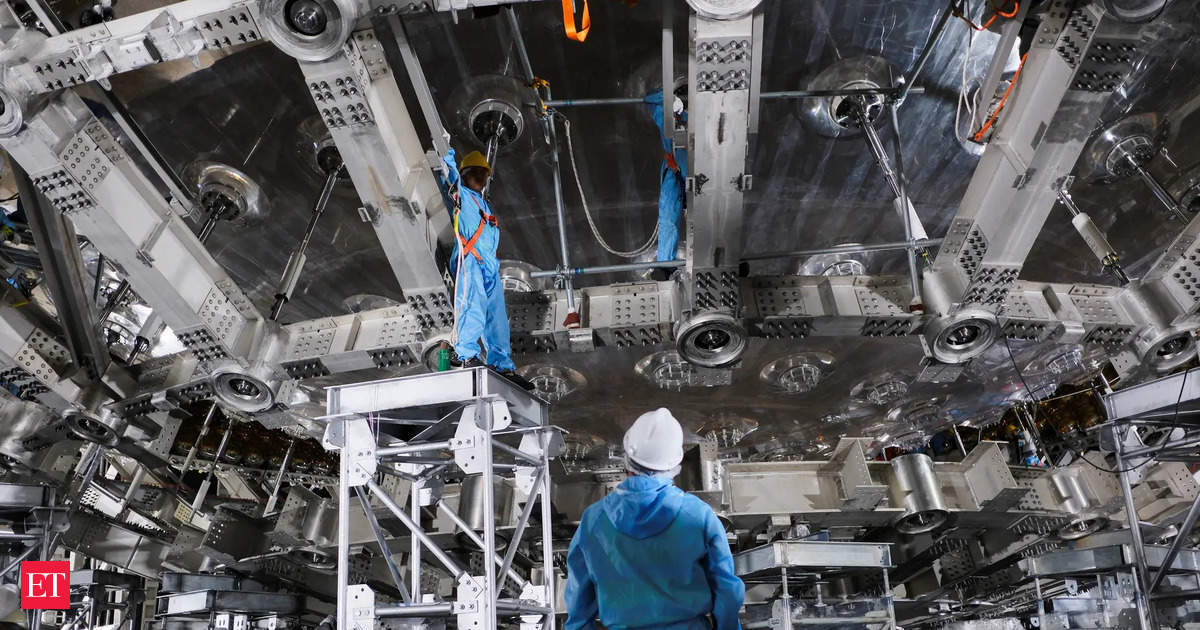The Jiangmen Underground Neutrino Observatory (Juno), a cutting-edge facility, is designed to study tiny subatomic particles known as neutrinos.
The Chinese Academy of Sciences recently hosted an international media tour of the observatory, located in Kaiping, Guangdong province. The lab, situated 700 meters (2,300 feet) below ground to minimize radiation exposure, is accessed via a funicular train that travels through a tunnel.
At the heart of the facility is the neutrino detector: a stainless steel and acrylic sphere, about 35 meters in diameter, crisscrossed with cables.
Initiated in 2014, Juno has cost approximately 2.2 billion yuan ($311 million) and is set for completion next year. Its goal is to solve a fundamental physics question about the nature of neutrinos before scientists in the United States, a global leader in the field. The research could also enhance our understanding of Earth, the Sun, and other celestial bodies like stars and supernovas.
Neutrinos are elementary particles that permeate the universe and travel near the speed of light. Despite being known to physicists for decades, much about their behavior remains a mystery.Researchers at Juno will detect neutrinos emitted by two nearby Chinese nuclear power plants, each located 53 kilometers (33 miles) away, and use this data to address the “mass hierarchy” problem. This challenge is considered critical for refining theories in particle physics. While scientists know that neutrinos exist in three different mass states, they have yet to determine which is the heaviest and which is the lightest.Solving this problem could significantly advance our understanding of the standard model of particle physics and provide insights into the universe’s past and future.
Researchers estimate that it will take six years of data collection to resolve the mass hierarchy issue. Although similar experiments are planned in the U.S. and Japan in the coming years, Juno is “leading the race,” Jennifer Thomas, a physicist at University College London and member of the project’s International Scientific Committee, told AFP.
Around 750 scientists from 17 countries are collaborating on Juno, including researchers from “two American groups”. However, international collaboration has been affected by geopolitical tensions. The U.S. has investigated academics of Chinese descent for potential espionage and encouraged domestic institutions to loosen ties with Chinese research entities. Meanwhile, Western governments have accused Beijing of limiting access to data and hindering investigations into sensitive topics, such as the origins of Covid-19.
Despite these challenges, some American scientists remain optimistic about the project. “We are not oblivious to the political situation, as there can be difficulties in obtaining visas and dealing with bureaucratic hurdles,” said Juan Pedro Ochoa-Ricoux, an experimental physicist at the University of California, Irvine, who is involved in the Juno collaboration. “These challenges affect both sides, possibly impacting our Chinese colleagues even more. Nevertheless, by working together, we demonstrate that science can and should be apolitical.”
With AFP inputs

